View Articles By Category
- All
- Aquatics
- Awards
- Biking
- Camping
- Conservation & Environment
- COPE/Climbing
- Cub Scouting
- Fishing
- National Jamboree
- NCAP
- Outdoor Ethics/Leave No Trace
- Properties
- Range & Target Activities
- Safety
- Shooting Sports
- Sponsored Content
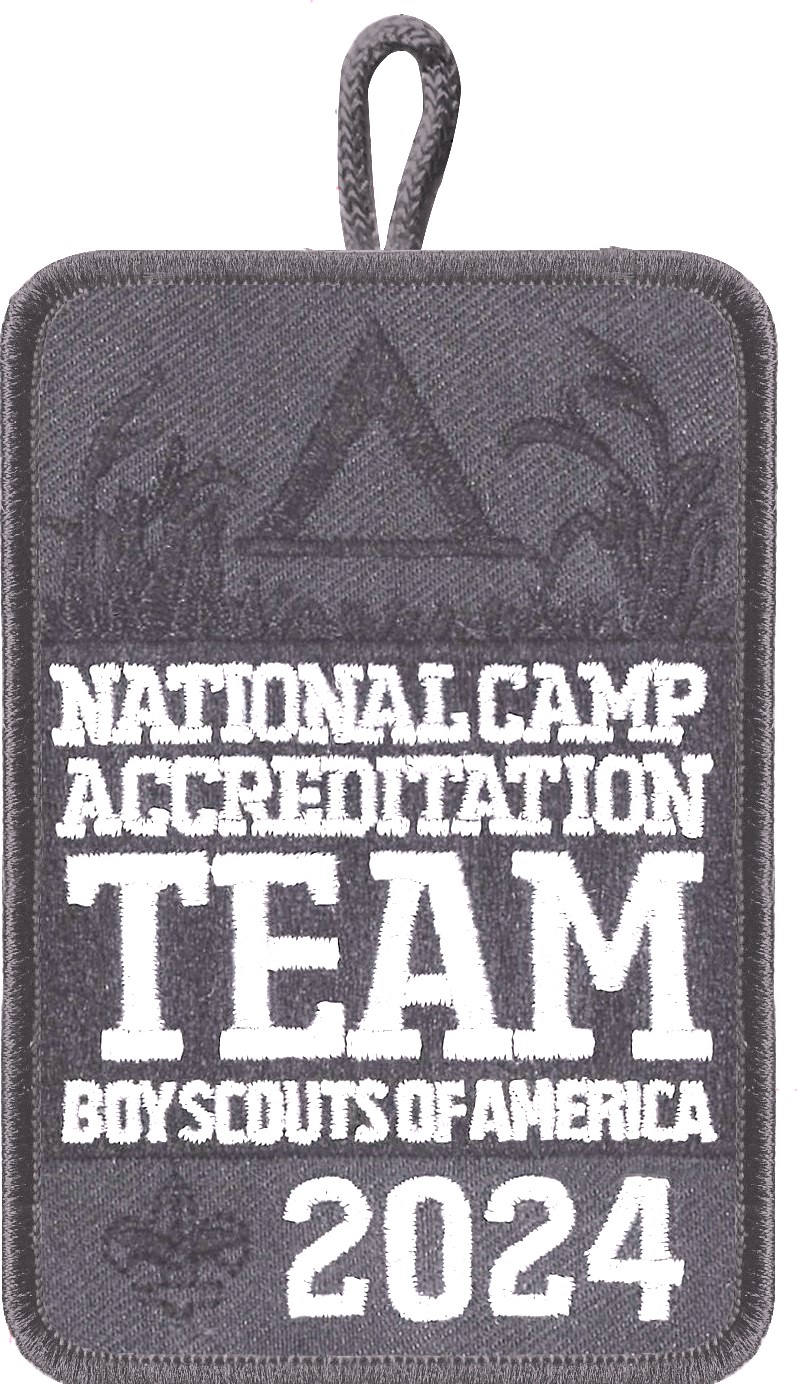
NCAP
The Boy Scouts of America introduced the National Camp Accreditation Program (NCAP) in 2013, setting standards to ensure that all camp facilities and programs align with Scouting values while providing a safe experience for Scouts and Scouters. If you’re passionate about contributing to the safety and success of Scouting adventures, becoming an NCAP assessor is a valuable role worth considering!
NCAP assessors play a crucial part in maintaining the Scouting brand and enhancing safety standards. Every camp program undergoes assessment to evaluate its safety and effectiveness. Some assessments are conducted by local council members, while others require an external team of national council camp assessors. Training is essential for all assessors to understand what to observe and why it matters. Specialized courses are available to equip individuals with the necessary knowledge. Training is updated annually to reflect updates in NCAP standards and other best practices. Understanding the NCAP standards and how the apply to camps and their programs is a key part of serving as a trained NCAP assessor. Participating in NCAP assessor training will help you “be prepared” to serve in this important role effectively.
For long-term camps, an external national council assigned assessment team must assess the camp. Over 2,000 dedicated volunteers from across the country participate in these assessments each year. These volunteers witness and assess programs offered by various councils. As assessors, they commit to addressing challenges they observe while also praising top-quality programs and staff.
If you’re interested in becoming a long-term camp assessor, reach out to your local council leadership and volunteers. Training is a prerequisite for participation, with two available courses – one online and the other conducted by the assessment coordinator or their team. The online course, accessible to anyone, provides comprehensive insights into the National Camp Accreditation Program. This training is available online at my.Scouting.org.
Short-term camp and day camp assessments are assessed by their local council. Short term camps are assessed by short-term camp administrators and day camps are assessed by assigned local council trained volunteers. To get involved, contact your local council leadership, and express your willingness to get trained and contribute to the assessment process.
For more information on the National Camp Accreditation Program, visit https://stg.scouting.org/ncap, or reach out to ncap@scouting.org. Becoming an NCAP assessor is a meaningful way to play a vital role in safeguarding Scouting adventures for future generations.
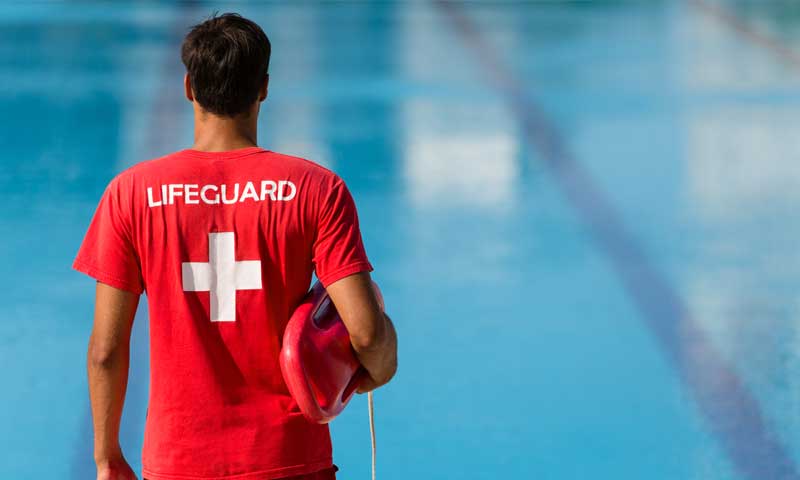
Aquatics
The announcement of the retirement of the BSA Lifeguard certification program, effective December 31, 2024, marks a significant shift in how Scouting America camps and councils approach lifeguard training. This change underscores the importance of proactive planning to ensure the continuation of high-quality lifeguard training and certification for summer camps and year-round aquatic programs.
Steps for Camps and Councils to Prepare:
To ensure a seamless transition, council and camp leadership should take the following steps:
Identify Your Training Plan Early
Begin establishing partnerships with organizations like the American Red Cross or YMCA. Both offer robust training programs and instructor certification pathways. If you do not have a current training agreement with the American Red Cross, reach out to the National Health & Safety Team for help.
Leverage the Transition Opportunity if Applicable
Scouting America has outlined a clear path for current BSA Lifeguard instructors to transition into nationally recognized training certifications. This pathway ensures existing expertise within camps is not lost. Individuals who are currently certified as lifeguard instructors through Scouting America can opt to “crossover” with American Red Cross crossover course. Details can be found here.
Educate Stakeholders
Share information about the transition with camp staff, volunteers, and parents. Communicate how the shift to nationally recognized lifeguard certifications enhances safety and aligns with Scouting America’s commitment to youth development.
Plan for Implementation
Plan now for additional time to get lifeguard instructors certified who can in turn certify your camp/council lifeguards. Ensure enough time for instructors to complete new certifications before the 2025 camping season.
National Camping School aquatics instructor training will no longer include lifeguard instructor training; however, most NCS courses will provide a pre-conference opportunity to become certified as a lifeguard instructor.
Attend the BSA Lifeguard Transition Webinar
Taking place on January 16th at 7 pm CT, this webinar will help councils walk through the step by step process to be prepared to certify lifeguards moving forward. Register here.
Aquatic safety has always been a cornerstone of Scouting’s outdoor programs. While the BSA Lifeguard program’s legacy comes to an end, this transition ensures camps and councils can maintain—and even enhance—the quality of their aquatic programs. The National Aquatics Committee remains a committed partner to supporting councils and camps during this time of change.
For more information and resources, visit the BSA Lifeguard Instructor Transition page or contact the national outdoor programs and properties committee. Let’s work together to ensure a safe, successful 2025 and beyond.

Camping
During seasonal fall events, carving pumpkins at a Scouting event can be a fun and safe activity for youth. With the right tools and adult supervision this activity brings a unique activity that Scouts and families can do together. Here’s a guide on safe pumpkin carving, tools needed, and five design ideas. (You could even use this information to help fill out a Program Hazard Analysis before the event.)
But first lets highlight the newly updated Cub Scout program knife safety elective adventures!
Knife Safety
One of the highlights of the Cub Scout experience has been the Bear Claws Adventure and the Whittling Chip program where Cub Scouts are introduced to pocketknife safety. The updated Cub Scouting program now includes elective adventures centered around knife safety for Bears, Webelos and Arrow of Light! In the updated program, to use a knife in Cub Scouting, the Cub Scout must first complete the knife safety Adventure for their rank, even if they earned the knife safety adventure in a previous rank. This replaces the Whittling Chip and introduces continuous certification for the use of a knife.
Ok back to pumpkin carving…
Tools Needed:
- Pumpkin carving kit: These kits typically include a variety of tools such as small saws, scoops, and poking tools designed specifically for pumpkin carving.
- Markers or pens: For drawing the design onto the pumpkin before carving.
- Newspaper or a messy mat: To cover your work surface and make clean-up easier.
- Battery-operated LED candles or lights: To safely light up the carved pumpkin without using an open flame.
Safe Pumpkin Carving Tips:
- Qualified adult supervision: Ensure that younger Scouts (Cub Scouts) have active adult supervision throughout the carving process.
- Use appropriate tools: Avoid using sharp knives or tools not meant for pumpkin carving, as they can be dangerous. Camping or folding knives are not recommended. Scouts from Bear rank and up can utilize a knife. You could even incorporate the knife safety Cub Scout elective adventures into your weekend event program plan.
- Stabilize the pumpkin: Place the pumpkin on a flat, stable surface to prevent it from rolling while carving.
- Safety Circle: With the Safety Circle method, there’s almost no way you could accidentally cut anyone else, which is the essence of blade safety! Assign this program to an area that has enough space to safely accommodate the biggest group.
- Lighting: Use battery-operated LED lights instead of candles to avoid fire hazards.
- Scooping out the pumpkin: Use a pumpkin scoop or spoon to remove seeds and pulp, rather than hands or sharp objects.
Bonus point – Consider the ecological impacts when determining where to dispose of your pumpkins. Speaking of pumpkin disposal, as a reminder “Pumpkin Chunking” is not an approved activity in Scouting.
Design Ideas:
Here are a few pumpkin carving design ideas suitable for different age groups:
Classic Jack-o’-Lantern:
- Design: Traditional face with triangle eyes and a toothy smile.
- Difficulty: Easy for all age groups.
- Tips: Start with a simple design to get comfortable with carving.
Spooky Cat:
- Design: Carve out a silhouette of a cat with arched back and whiskers.
- Difficulty: Moderate.
- Tips: Use smaller carving tools for detailing the cat’s features.
Funny Monster:
- Design: Create a goofy, whimsical monster face with multiple eyes and a big grin.
- Difficulty: Moderate.
- Tips: Experiment with different facial features and expressions.
Camp Logos/Theme:
- Have camp logo or event theme templates that scouts can trace on a pumpkin.
- Difficulty: Moderate
- Tips: Have enough copies of the template to pass out for Scouts to use.
These designs can be adjusted based on the age and skill level of the youth participants. Encourage creativity and have fun with the carving process!
Resource Links:
Scouts Life article: https://scoutlife.org/about-scouts/cub-hub/58847/halloweenpumpkins/
Knife Safety Link: https://stg.scouting.org/program-updates/knife-safety/
Totin’ Chip Link: https://stg.scouting.org/awards/awards-central/totin-chip/
Safety Moment – Safe Scouting: https://stg.scouting.org/health-and-safety/safety-moments/safe-scouting/

Camping
It is no secret that the success of your summer camp hinges on the quality of your staff. Enthusiastic, skilled, and dedicated camp staff can turn a good program into an unforgettable experience for Scouts. But how can your council find the right candidates? Let’s talk about some strategies for effectively recruiting summer camp staff, highlight top job sites like Jobs.ScoutLife.org, and share tips for crafting compelling job postings.
1. Leverage Scout-Specific Job Boards
One of the best places to begin your search is within the community of those already passionate about Scouting. Scouting America maintains an excellent website for posting camp jobs at Jobs.ScoutLife.org. This site provides a platform where councils can connect with people who already know and appreciate the Scouting program. You can post jobs for your camp and see what jobs are available.
When posting on a Scout-specific job board make sure to:
- Be Descriptive: Clearly outline the position, responsibilities, and skills required.
- Highlight the Perks: Camp jobs offer more than pay-promote benefits like leadership development, outdoor skills training, and the chance to make a difference. Make sure to highlight these aspects.
- Post Early: Get ahead of the hiring season by posting positions in the fall or early winter to capture early applicants. Now is not too soon.
2. Expand Your Reach on General Job Sites
While Scout-specific platforms are optimal, you should also consider posting on general job boards, such as Indeed or ZipRecruiter, or seasonal work-centered venues like CoolWorks. These websites will help you find candidates both inside and outside of the Scouting world who are ready to have a life-changing summer adventure. Some of these sites may require subscription or charge fees but a little spending here can help you not be in crisis mode later.
3. Tap into Local Colleges and Universities
Tons of college students are looking for meaningful summer work that means more than just earning a paycheck.
Reach out to:
- Career Services: Ask to post on campus-sponsored job portals.
- Outdoor Programs: Reach out to departments focused on recreation, leadership, and education majors. Some schools even have an outdoor recreation major with students looking for internships.
- Student Organizations: Clubs such as outdoor adventure groups, leadership societies, or Scouting-related organizations can be an excellent fit.
4. Engage Your Alumni and Volunteers
Active and former Scouts, camp staff alumni, and council volunteers can be some of your top ambassadors.
Encourage them to:
- Share Openings: Ask them to share job postings with their networks.
- Recruit Friends: Incentivize them to refer qualified candidates.
- Join the Team: Many volunteers may be eager to step into a paid seasonal role.
5. Leverage Social Media
Platforms like Facebook, Instagram, and LinkedIn are potent tools for recruiting staff.
To maximize social media:
- Post Engaging Content: Share photos or videos of past camp staff in action. Use the staff themselves to help you create this content.
- Tag and Share: Tag local Scout groups, councils, or outdoor enthusiasts.
- Run Ads: Use targeted ads targeting people with interests in camp, outdoor, and leadership employment. These are marketing dollars well spent on your camp. This can help you more than investing in an out-of-date camp video.
6. Write Killer Job Postings
A great job posting can make all the difference. Here are a few tips:
- Use an Attention-Getting Title: Instead of ”Camp Counselor,” or “Summer camp staff” how about “Outdoor Adventure Leader” or ”Scout Skills Specialist.”
- Be Specific: Include duties, pay, location, and how to apply.
- Sell the Experience: Highlight what’s unique about the camp, such as waterfront activities, high adventure programs, or conservation projects.
- Call to Action: Invite candidates to apply and let them know why they won’t want to miss the opportunity.
7. Job Fairs and Events
Attend local job fairs, with an emphasis on seasonal or outdoor recreation-related events. Bring visuals -a banner, videos, testimonials of your staff- to help describe your unique camp culture.
8. Establish a Pipeline for Recruitment Year-Round
Year-round, stay in contact with returning and prospective staff through the following ways:
- Keep in Touch: Send newsletters or other information related to camp opportunities
- Off-Season Opportunities: Include prospective staff in council activities throughout the year.
- Building a Leadership Pathway: Design programs to develop the skills of older Scouts and young leaders with the potential for future staffing.
9. Start Early and Stay Focused
Recruiting summer camp staff is a year-round job that demands imagination and follow-through. Through utilizing online platforms such as Jobs.ScoutLife.org, tapping social media, and networking through local institutions, your council will recruit the team for a fantastic next camp season.
For more information, resources, or assistance, do not hesitate to reach out to the Outdoor Programs team at the outdoorprogram@scouting.org.
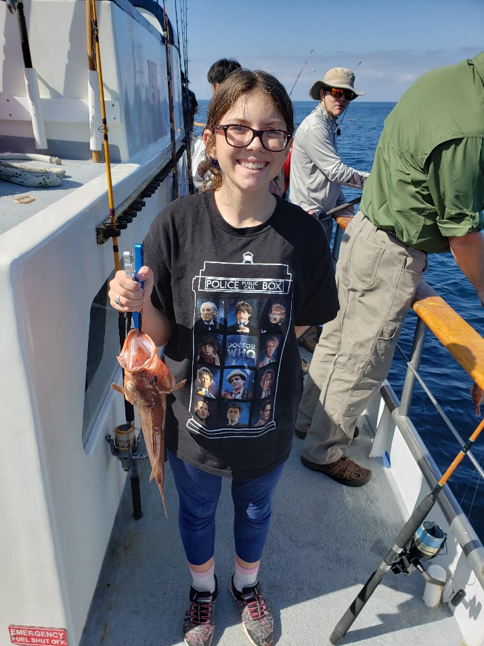
Fishing
Where is the best place to spend your program dollars? For Scouting Executives and Volunteers, this must be the million-dollar question.
What is the purpose of spending these precious dollars? The Wildlife Conservation Profession has a initiative called R3. The three R’s stand for Recruitment, Retention and Re engagement. If you don’t know this, virtually all wildlife conservation dollars are raised by the sales a licenses and related equipment. All guns, ammunition and fishing related gear has a tax on it for funding conservation. The State Agencies whose job is conservation know this and have initiatives to recruit sportsmen and women to fish and hunt.
We in Scouting should see R3 in our ranks also. We should be thinking R3 for both Youth and Adult Volunteers.
Boy’s life magazine did a survey. They asked Cub Scouts and Boy Scouts what activities they expected to do after 3 months after their registration. Their answer at the top was Camping and hiking. The Cub Scouts had fishing as #5 and the Boy Scouts had fishing as #3. Surprisingly, these were both above shooting.
So, to have satisfied customers, you need to meet their expectations. Do we inherently make a promise to the youth by their expectations and don’t meet them? How about looking at fishing as your hook? (Pardon the pun, I just couldn’t help myself)
Here is one way to start. Consider having a Certified Angling Instructor Class (CAI) in your council. This class will give you more knowledgeable and enthusiastic Volunteers. Your Fishing, Fly Fishing and Wildlife Conservation Merit Badge Counselors are your target market for this class.
From the CAI class, see if you can start a Council Fishing Committee. You will need a leader who has the management skills to run a committee. This Committee runs fishing events in your council.
It is really that easy.
If you want more Youth, look at fishing. It is the best bargain in Scouting!

Fishing
The fishing equipment is flying off the shelves or not there at all. With the societal changes that 2020 has brought us, the new hot outdoor activity is fishing. Fishing license sales are at a record high. It is a fun activity where you can easily social distance.
So, what have you been doing? Jig-Saw puzzles? Watching way too much TV? Is your dog looking at you saying do I have to go for a walk again? You can easily fish and enjoy the great outdoors safely.
What about your Pack, Troop or Crew? Can you find a better way for them to get outside? Fishing is also a great family activity and a good way to engage families into your unit’s program.
Some of the activities developed by the National Fishing Sub Committee during quarantine and seclusion are:
- A new Instructional Cub Scout Fishing video: “Worm Drowning 101”, a presentation on how to simply take Cub Scouts fishing. Currently in editing
- Fishing Merit Badge online: a resource for Fishing Merit Badge Counselors to present Fishing Merit Badge virtually. Proposed deadline is August 1, 2020
- Certified Angling Instructor (CAI) Course online: we are nearly finished with the CAI course to be offered via distance learning. It should be completed in mid August 2020.
- Developing Fishing activities for all levels of Cub Scouts: currently, fishing is only offered for Cub Scout Bears. Watch the website for release in the near future.
To take your youth and Scouting family fishing really doesn’t take much. Getting outdoors and doing a fun activity is what our youth are after! It’s not the size of the fish; it’s the thrill to be outdoors. So, offer them a chance to catch something that “wiggles the rod” and put a big smile on their face by being part of the Adventure of Scouting!
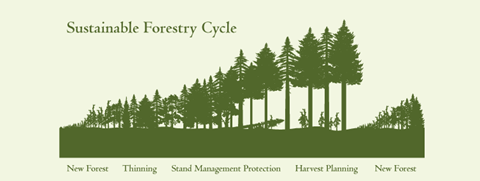
Conservation & Environment
This will be a continuing series of articles on various aspects of the properties we own, lease, care for, and look to make better. As we all know, the program of Scouting is valuable to the growth of youth in this country and around the world. Where we deliver that program needs to convey that value and the coming articles are intended to assist us all in making that conveyance to our current users, as well as all of our future users and their families.
For most of us we use on a daily basis an item we take for granted being available for us to purchase 24/7 all year long. Until we couldn’t. What? Think back to the early days of Covid-19. What disappeared off grocery shelves faster than anyone thought possible? And many of us thought, why are people buying this one product over anything else?! I mean really!!! Toilet paper. Who would’ve thunkit?
We all expect toilet paper to be ever present in our stores, until it isn’t, and wasn’t! And why did this occur? It’s not like we lost the source. Where does toilet paper originate? If you’re a Charmin user you may think a little cabin in the woods with a bear population that happily makes toilet paper for us to use, but… that’s crazy thinking! Or is it?
So, this month’s article is not about toilet paper, I’m sure you’re happy to know. Its not about the bears either. It is about the ‘woods’ this material comes from.
We are blessed with some of the most awesome ‘dirt’ on this satellite we ride on! And on that ‘dirt’ for most of us, we have an abundance of trees. Of all shapes, sizes, and species. And, quite frankly, some of us manage our forests better than others. We should all have forestry plans in our quiver of tools to use in managing the properties we own of course, but also for those we lease, which many of us would find surprising in the high percentage of properties we operate our program upon, that we do.
In particular a component of that forestry plan needs to address how we harvest the God given resource available to us. Depending on your acreage of trees, what quantity could be harvested regularly? To some degree, this is a market driven resource, but given the growth of many parts of the country, the need to harvest some of our forests is always present. In addition to how you manage the harvesting, notably contract inclusions addressing access roads installed to remove those trees harvested from an area, what materials are used and how are they maintained over time, what happens to the slash created from the harvesting process, and how is the acreage harvested replanted for a future crop. All of these questions, and more, need to be addressed with a logger prior to any harvest being initiated.
What we’ll address this month is the last part of those inclusions just mentioned, replanting. In review of several forestry plans for those that have one, this issue is rarely addressed, but should be so future harvests, and their revenue, are managed in perpetuity. Additionally, as forests are sometimes referred to as the “lungs of the world” we all should manage the health of our “lungs” more directly as they take care of our atmosphere, or more directly, the air we all breath. Given that climate change is very real and is happening right before our very eyes, this is a serious subject becoming all the more so with each passing day. We cannot afford to look the other way any longer!
What would you say if the question was posed to you concerning the rate of what we’re losing in forested areas every year? Are you aware of the loss? From the Arbor Day Foundation the amount of deforestation of the worlds rain forests alone is “roughly 81,000 square miles each year.” Of those who’ve been to our crown jewel, Philmont, we know the ranch is comprised of roughly 300 square miles. The amount of rain forest alone each year we’re losing is equivalent to about 270 Philmont’s!
Think about that for a minute. Notably, think about the fire this organization experienced at Philmont a couple years back. That was what? Figure heard most was about 33,000 acres were burned. That equates to about 52 square miles. To put this in another perspective, the amount of rain forest alone we lose every year is equal to 1558 Philmont burns every year! Think about that! And that doesn’t include the fires in California, in Canada, Indonesia, Russia, Europe, or Africa! We are losing this precious resource at an extremely alarming rate!
So, what can we do about it?
First, let’s all start by generating a forestry plan for the properties you manage if you haven’t already. And if you need guidance on what to include don’t be shy about reaching out and asking for the help! Working with a local forester and/or a representative of the US Forest Service would be a good first step. Consulting with loggers who are more conscious about what their operation does to a tract of land than those who are blind to the damage these companies can cause is a good second step.
Second, as part of the replanting component, where can you go to acquire seedlings? Where can you acquire very young trees, in a cross-section of species that will grow in your area and soil types? In a quantity that will translate to a good survival percentage of the area replanted. As a tree doesn’t become the 40’ to 80’ beauty they will grow to overnight, what is the expected survival rate and what thinning measures if any, need to take place while the forest matures? This is where having your local forester as a member of the team that helps you manage your property is invaluable. Your Ranger for your property needs to be versed in more than just how to take down a diseased tree safely, but also how they can contribute to the success of a harvested area being replanted and grow into a future area to be harvested.
Sources for tree seedlings include your county extension service. Many of the states, especially those that are heavily forested, have state and county departments that offer varying species of trees. Many offer fast growing species to the agricultural community to help protect fields and act as wind breaks to minimize wind erosion. Others offer the species most commonly harvested for the lumber and pulp industries. Other sources include the lumber industry and mills as they rely on a continuous supply of product to generate what they sell to other industries. Arbor Day Foundation can supply varying species of trees. Nice thing to know is they are capable of supplying large quantities of seedlings to cover acres. Some cities, especially those designated as Tree Cities, have tree farms which may offer seedlings in trade for time helping on the tree farm itself. Toilet paper was mentioned back in the beginning of this edition of Let’s Do It! with some of those manufacturers implementing their own tree planting initiatives so they have a steady supply of pulp from which to generate their product lines. Quilted Northern is a brand that replaces 2 trees for every tree they harvest. In fact, since 2020 they’ve already funded the planting more than 3.5 million trees. Now we’re not on that scale, but at this point every little bit helps.
Looking on the internet other sources for seedlings are – Walmart, Etsy, Gurney’s, many nursery’s are good sources for obtaining quantities of tree seedlings. Bestseeds, Willis Orchards, Stark Brothers, and certainly Amazon are among many who offer seedlings. So, it’s not like you can’t obtain these locally and by wholesalers throughout the country. The only caution is to obtain seedlings of species more native to your area and soils.
Another option may be 8billion trees. This is a company that was formed to offset the deforestation taking place in the Amazon rain forest in particular. While they don’t distribute seedlings, by purchasing their products, making donations, and membership you are contributing to the carbon offset initiative which is vital to the health of our planet.
Trees. Large and small, big and tall, colorful and fruitful, trees are a common sight on our properties. And while they can be majestic and provide us numerous resource they can also present us with all sorts of issues we need to be much more aware of. But, let’s get to where we manage better what we have already first. Then we can dive deeper into all approaches to managing the trees on your properties.
Generate the plan and put the plan in motion so future generations of Scouts and their families, and quite frankly, their communities can enjoy the woods as much as we do!
See you next issue!
Dave Cornell
Architect
The Outdoor Programs / Properties Team is ready to assist and guide in any respect to making the program of Scouting the best youth program! Reach out to any member of the team and we’ll endeavor to provide quality answers to any issue you may have and/or facing. We look forward to working together to make the program the best ever!
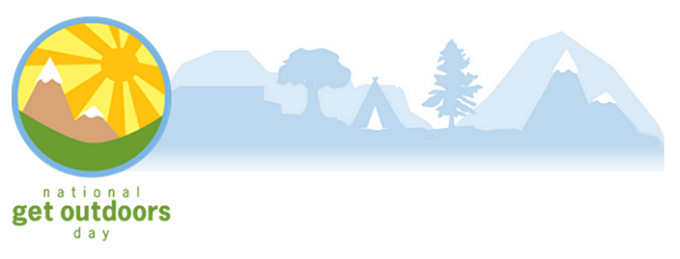
Camping
It is almost summer and that can only mean one thing…being in the OUTDOORS!
Saturday, June 8, 2024, is not just any ordinary day—it’s National Get Outdoors Day, and now is the time to gear up to make it an adventure-packed celebration for all our Scouts!
Now, I know you’re always on the lookout for ways to engage and excite your Scouting units and get them out to camp, and what better way to do that than by embracing the great outdoors? On National Get Outdoors Day, let’s make a pact to take our Scouting spirit beyond the usual confines of our meeting location and into the wilderness – or at least somewhere outside.
Here’s the game plan: let’s use this special day to schedule some epic outdoor activities. Think hiking, fishing, archery, you name it. It’s the perfect opportunity to introduce our newly recruited Cub Scouts, and Scouts BSA members to the thrill of outdoor adventures and get them hooked on the magic of Scouting. Maybe even use an event as a kickoff to the new Cub Scout program adventures related to the outdoors. You can choose from several outdoor electives for each rank.
But wait, there’s more! Circle another date on your calendar because June 27 is the “Great American Campout”. It’s a chance for us to come together as a Scouting community and celebrate the joys of camping under the stars. This event is also known as the “Great American Backyard Campout”, so you don’t have to make this a large event. The key is to get our Scouts outside camping and give them a chance to sleep in a tent or even under the stars. Nothing better than camping with the family outdoors or sitting around the campfire telling stories and sharing laughs. Well maybe making S’mores around the campfire could make it better.
And speaking of s’mores, mark August 10, 2024, on your calendar as well. This is one of our favorite “holidays” as it is National S’mores Day! It’s the perfect excuse to indulge in this camping classic and create some sweet memories with your Scouts.
Now, I know what you’re thinking. How do we make all of this happen? Well, it’s simple! Get your team together, brainstorm some exciting outdoor activities, and start spreading the word among your Scouts and their families on how you can celebrate Great Outdoors Month through one of these fun special “holidays”.
So, are you ready to answer the call of the wild and make June 2024, an unforgettable outdoor extravaganza? I sure hope so! Let’s show the world what Scouting is all about—adventure, camaraderie, and the great outdoors!
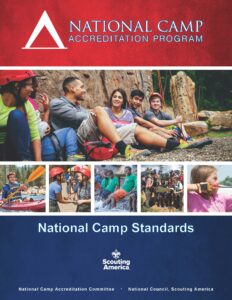
NCAP
Running a successful camp requires more than just creating memorable activities; it involves a constant commitment to improvement and safety. This is where a Continuous Camp Improvement Plan (CCIP) proves invaluable. As outlined in the CCIP Guide, a CCIP is integral to meeting standards set by the National Camp Accreditation Program (NCAP) and is part of the 5-year authorization process for camps. Let’s explore how a CCIP can support your council’s goals in camper experience, staff development, operational efficiency, and environmental stewardship, with specific reference to the guide’s insights and NCAP standards.
- Enhance the Camper Experience
At the heart of the CCIP is a focus on continually improving the camper experience. NCAP requires councils to incorporate feedback from campers and families, allowing camps to adapt to evolving camper expectations. A CCIP helps camps stay in tune with trends and adjust activities, facilities, and food options to ensure they remain engaging, relevant, and safe. Whether through upgrading equipment or adding new programs, a CCIP keeps the camp experience fresh and enjoyable.
- Strengthen Staff Training and Morale
According to the CCIP Guide (page 8), NCAP emphasizes the importance of ongoing staff training and development, a core component of a successful CCIP. By collecting feedback from staff and regularly updating training programs, a CCIP helps staff build new skills, manage challenging situations, and create a positive team culture. This fosters a supportive environment where staff feel valued and motivated, which ultimately enhances the camper experience.
- Ensure Safety and Compliance
Safety is paramount, and a CCIP provides the structure for camps to regularly review and refine their safety protocols. As noted on page 12, NCAP Standard AO-805 outlines that a CCIP should include routine assessments of safety procedures, emergency response plans, and legal compliance. Camps that adopt continuous safety improvements can reduce risks and assure parents that their children are in a secure environment, building trust and accountability.
- Increase Operational Efficiency
Operational efficiency is another essential area addressed by the CCIP. Councils should analyze processes such as registration, budgeting, and inventory management to identify areas for improvement. A CCIP enables camps to optimize resource allocation and improve day-to-day operations, freeing staff to focus on creating a great camper experience while also achieving cost savings and smoother logistical operations.
- Commit to Environmental Stewardship
A CCIP encourages camps to be mindful of their environmental impact and to respond to changing environmental conditions. NCAP requires councils to adopt sustainable practices that protect natural resources. From managing water and energy usage to promoting Leave No Trace principles, a CCIP fosters environmental responsibility among campers and staff, supporting long-term sustainability while cultivating a respect for nature.
- Build a Positive Camp Reputation
Camps that continuously improve their programs are better positioned to build a strong reputation. Councils should demonstrate responsiveness to camper feedback to enhance their program quality. This commitment can lead to increased camper retention, positive referrals, and stronger community partnerships. Parents are more likely to trust camps with an established record of listening to feedback and making meaningful improvements, which ultimately attracts new families and loyal campers.
- Foster a Culture of Growth and Innovation
A CCIP creates a culture where everyone—from staff to campers—is encouraged to innovate, take on new challenges, and strive for growth. Page 13 of the CCIP Guide details how a CCIP supports fostering a growth-oriented culture within the camp community. This approach ensures that camps not only adapt to changes but thrive, fostering an environment where campers and staff alike feel empowered to contribute ideas and improvements.
Key Steps to Launch a Continuous Camp Improvement Plan
- Gather Regular Feedback: Use surveys, interviews, and observation to collect insights from campers, staff, and families as a foundation for targeted improvements.
- Set Clear Goals: Define measurable objectives based on NCAP standards and feedback. These could focus on safety, camper satisfaction, or sustainability goals.
- Implement and Track Changes: Put action plans into effect and monitor progress through regular evaluations and staff check-ins.
- Review and Adjust Regularly: Schedule routine assessments to ensure continuous alignment with NCAP standards and adjust as needed.
Conclusion
A CCIP is essential for camps aiming to improve, adapt, and provide exceptional experiences in line with NCAP standards. By committing to continuous improvement, camps not only enhance camper enjoyment and safety but also build a lasting legacy that benefits everyone involved. A CCIP isn’t just about addressing issues—it’s about building a camp environment that campers and staff want to return to year after year.

Properties
After months and months of juggling maintenance projects, capital improvements and year-round camp visitors, summer camp is just days or weeks away! For our camp rangers and maintenance teams, maintaining camp during the summer camp season can be complex! With new and returning camp staff, hundreds of weekly visitors, and the inevitable breakdown of some piece of equipment, it can be stressful to keep camp “day 1” ready every day.
Here are a few suggestions of how you can leverage your summer camp staff to help them help you!
- Provide resources. Working alongside the camp director, ensure that camp staff understand what a clean, safe and hazard free environment looks like in their specific area and then provide camp staff with cleaning supplies and basic supplies to help you help them keep their respective areas clean and hazard free.
- Regular Inspections. Camp staff can conduct routine inspections of camp facilities, equipment, and grounds. See something? Say Something! They should report any issues, such as damaged buildings, broken equipment, or hazardous conditions, to the maintenance team promptly. This proactive approach can help prevent minor issues from becoming major problems. Make regular inspections a part of their daily camp routine in their assigned areas.
- Have a specific process to notify you when something needs maintenance and communicate it to camp staff. Is this via paper? Via FIIX or other CMMS software? Online? Via text? The easier the process, the more likely you will know when something needs immediate repair. Share a sample of a “work order” that meets your expectations so camp staff know what will best help them help you help them when they submit a work order.
- Promote a Culture of Care: Camp staff can help promote a culture of care and respect for camp facilities among campers and visitors. Encouraging campers to clean up after themselves, use facilities properly, and report any damage they notice can help prevent unnecessary wear and tear on camp facilities. By modeling this behavior as camp staff themselves, campers will also model this behavior.
By actively involving camp staff in camp maintenance efforts, camps can ensure that their facilities remain safe, functional, and enjoyable for all campers and visitors throughout the camp season.
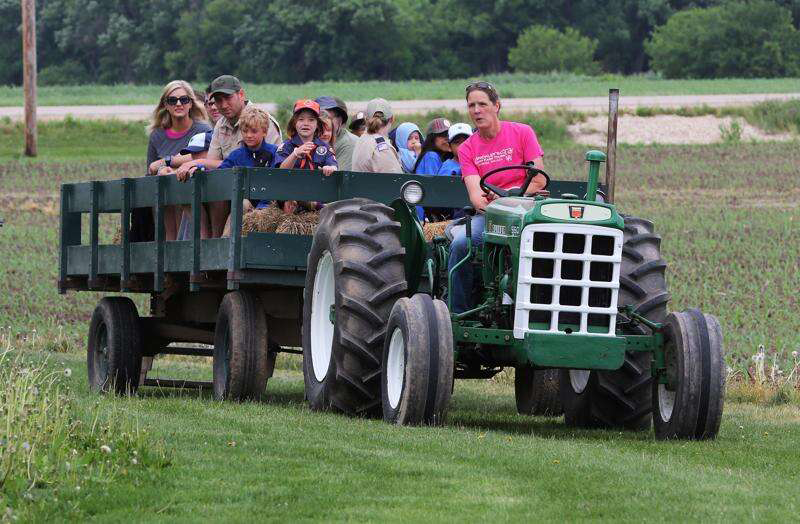
Safety
As the weather begins to cool and the season changes, now is the time that many of our units and councils are looking toward the holiday season and fall festivals. Many of these events include parades and hayrides or wagon rides. While these events are approved for Scouts of all ages there are a few things you need to remember in planning and executing a parade or hayride as a part of your camp or unit program.
In most circumstances the transportation of passengers in the back of a pickup truck or on a trailer is prohibited. The Guide to Safe Scouting specifically discusses the exception for hayrides and parades. (see Guide to Safe Scouting – Parade Floats and Hayrides)
So let’s start with a few SAFE tips for hayrides and parades:
Supervision: Active adult supervision is required for all Scouting activities, but especially ones where vehicles are involved. It’s a good idea to have leaders spread throughout your trailer, wagon, or truck bed near the open areas (like the access to the trailer, wagon or tailgate) to help with any unexpected bumps.
Assessment: Ensure that everyone is safe in the trailer or truck bed and that you are following the instructions listed in the Guide to Safe Scouting.
- Transportation to and from the parade or hayride site is not allowed on the truck or trailer.
- Those persons riding, whether seated or standing, must be able to hold on to something stationary.
- Legs must not hang over the side.
- Flashing lights must illuminate a vehicle used for a hayride after dark, or the vehicle must be followed by a vehicle with flashing lights.
Fitness and Skill: This involves not only the participants but the driver as well. All drivers of the tow vehicle need to be familiar with the proper procedures for towing vehicles. Additional training may be involved if the tow vehicle is a tractor or other farm type equipment.
Ensure all youth and adults who are participating in parades (especially if walking) are fit enough for the parade route. Many parades have elevation changes and some are lengthy so a health evaluation is important before you begin.
Equipment and Environment: Look at the equipment you are using for your hayride or parade and ensure that it meets the requirements for Scouts.
- Make sure no one can hang their legs over the side.
- Ensure that there is something stationary for everyone to hold onto even if seated.
- Keep an eye out for weather as the fall season changes rapidly. Make alternate plans if there is inclement weather forecast.
- Ensure that the trailer is properly secured to the tow vehicle. This could include proper sized tow hitch, chains and other safety measures.
- Ensure all participants are dressed properly for the weather and activity. If you are walking in the parade ensure that Scouts and leaders have water and proper footwear for the parade route.
Hayrides and parades are meant to be fun, but we, as leaders, must ensure they are safe, too. By following the Guide to Safe Scouting, you can make sure your Scouts are having the time of their lives, whether they’re waving to the community from a parade float or enjoying a hayride through a fall festival.
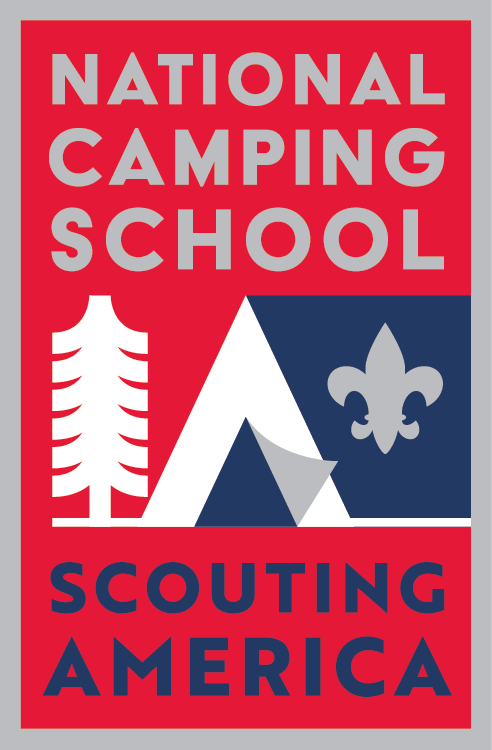
Camping
Ready to enhance your camp programs? The 2025 National Camping School (NCS) is now accepting registrations for all Long-term (Resident) Camp and Day Camp sessions! This is your chance to equip your team with top-tier training for an unforgettable camp season. Visit stg.scouting.org/ncs to view dates, locations, and course fees.
Start recruiting your camp’s future leaders! Enroll staff for NCS who will play key roles in your summer camps and day camps, as well as year-round volunteers who drive impactful short-term camp experiences. Plus, think beyond the summer! NCS offers specialized training for program volunteers on council committees in areas like Aquatics, Range & Target Activities, COPE, and Climbing.
Register now to ensure your team has the skills to deliver safe, engaging, and memorable camp experiences. For more information about 2025 National Camping School offerings please visit stg.scouting.org/ncs or email ncs@scouting.org.
Email blast!
Email blast!




